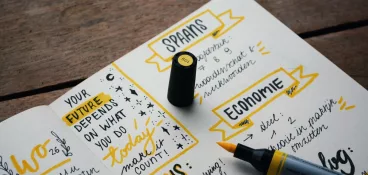Whether you’re a designer, a creative director, or a project manager, design approval can be a tricky and time consuming process. Multiple stakeholders. Multiple rounds of feedback. Multiple opportunities for hold ups and missed deadlines.
But with an effective design approval process in place, those pain points can become virtually non-existent. And the right design approval software can make things even easier.
Sounds appealing? Thought it might.
Use this guide to help you build an effective design approval process, accelerating sign-off and ensuring you hit every deadline thrown at you.
What is a design approval process?
A design approval process is a structured approach to getting your designs signed off by multiple stakeholders. Whether you’re working on designs for a webpage, a social media ad, new packaging, or even just presentation slides, an effective and well-planned approach streamlines the process and makes getting proof approval a breeze.
Approval processes usually look like this:
- You submit the first draft
- Reviewers give their feedback and either request changes or approve the file
- The designer makes any requested changes and resubmits the design
- This process repeats until all stakeholders have given their sign-off
Hate missing feedback on your designs?
Learn how to cut human error from your approval process and deliver high-quality content, whoever’s creating it.
The four-step design approval process
Let’s take a look at those four steps in more detail.
1. Share your designs with your reviewers
The first step of the design approval process is to share your first draft with the review team and the specified department supervisor. Make sure you know exactly who needs to be involved in the process before you do so – different businesses and projects will require different stakeholders to get involved at different stages.
Once you create an approval request form, you can share your designs via email, or you can use a specific review and approval platform like Filestage to make the design review process more efficient.
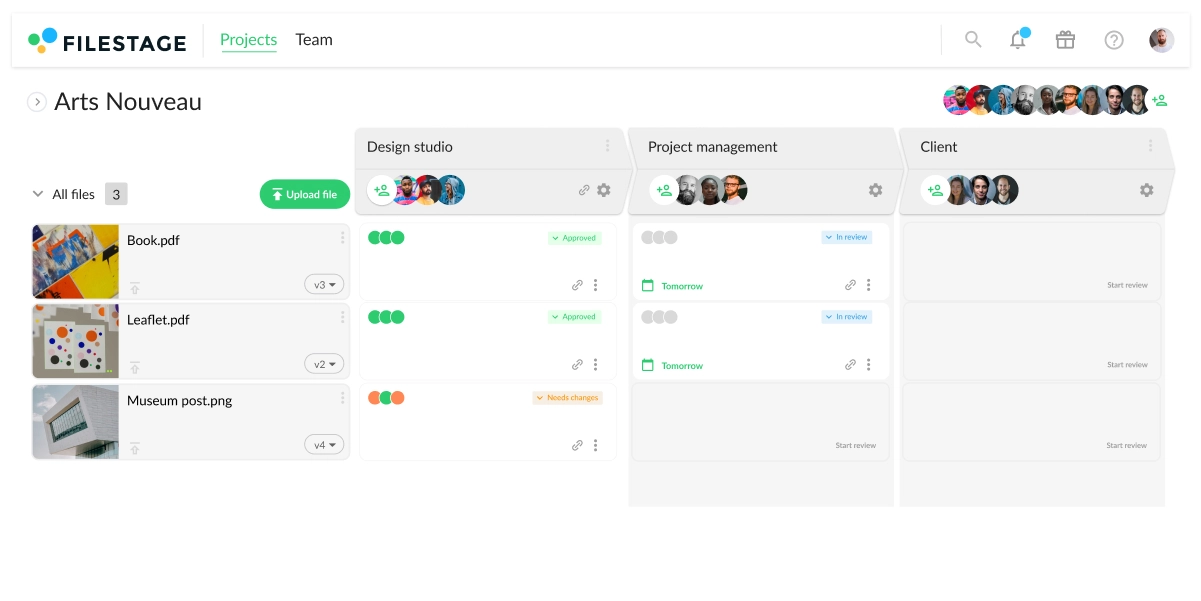
2. Collect feedback and discuss improvements
Collect feedback from your reviewers using email or, better yet, a specialist design feedback tool. When you create an approval request via email, there can be crossed wires, multiple email chains, missed amend requests, and altogether a bit of a mess.
But with online proofing tools for graphic designers, like Filestage that have been specifically designed to help you collate feedback, life gets that bit easier. You can even get feedback on websites!
Your direct department supervisor and other reviewers can open the file in their browser and leave comments and annotations for everyone else in the process to see in real time. They can discuss the feedback amongst themselves there and then, resolving any conflicts so that you know exactly what amends need to be made.
3. Create and share the next version
After reviewers have submitted their feedback and all questions have been clarified, you – or the relevant editor – can implement the changes. A review and approval tool makes this step easier by displaying all the comments in one place. Tick them off as you go along so that you know that every suggestion has been actioned. And with built-in version control for your designs, you can easily refer back to see what’s changed.

4. Repeat until you get approval
Repeat steps two and three until you’ve got approval from every stakeholder. Design approval software helps you to keep track of who has provided sign-off, and who you’re still waiting for. Once you’ve got full approval, you’re ready to publish, launch, share, and celebrate!
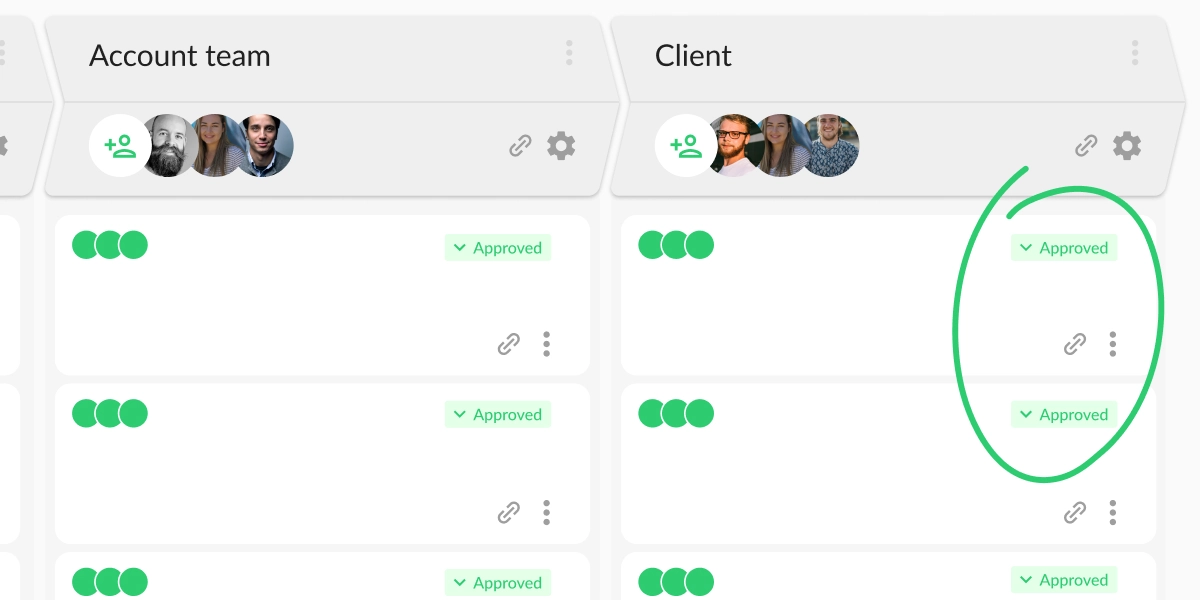
Hate missing feedback on your designs?
Learn how to cut human error from your approval process and deliver high-quality content, whoever’s creating it.
Three design approval process best practices
Now that you know the relevant steps, let’s take a look at best practices to make the design approval process even more effective.
1. Define who will be involved in your design approval process upfront
Like I said earlier, every business will have different stakeholders that need to be involved in the approval process. Who these people are will vary from business to business and from project to project. Here’s an example of who might need to be involved in the multi step approval process:
- Team lead
- Creative director
- Marketing team
- Brand manager
- Legal team
- Higher management
- Client (and all of the above client side)
Make sure you know from the offset who needs to be involved and when.
Depending on the size and scope of the project, you might want to break the approval process down into steps, with different stakeholders involved at each stage. This will help you design flexible approval processes while collecting all important approvals.
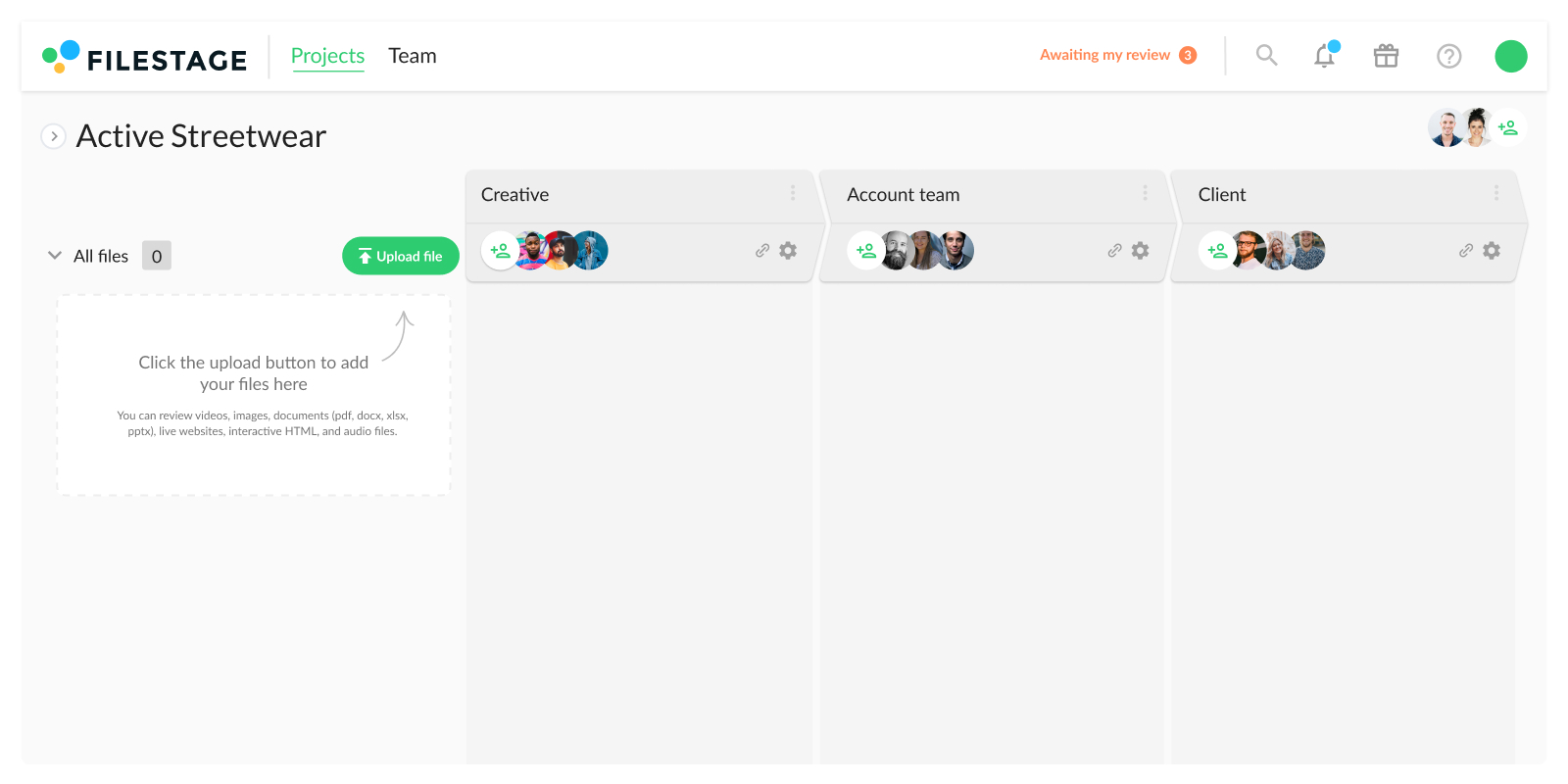
2. Set due dates to make sure your designs get approved on time
Gathering approval from various stakeholders can be time-consuming and frustrating, especially if you have to waste precious time chasing people who haven’t got back to you.
Setting a due date for every review step means that reviewers have a deadline to work towards, helping them to prioritize their work. And when you receive feedback and approval on time, you’ll meet your project deadlines with less stress.
With Filestage, you can add due dates to your files to keep your projects on track. We’ll send a reminder to any reviewers who still need to take a look, taking the chasing and pestering part of your job away from you.

3. Give reviewers a centralized place to share feedback
This is where specialist design feedback tools really prove their worth. Collating feedback all in one place – rather than in dribs and drabs via various email chains – makes life easier not only for you, but for your reviewers too.
With Filestage, reviewers can leave comments, annotate your designs, and tag specific team members. They can clearly see what others are saying, discuss feedback and any disagreements, and iron out any conflicting opinions there and then.
And once they’re ready, you’ll have a clearly defined set of edits to make that you can turn into a to-do list and work through before sending your reviewers the next version.
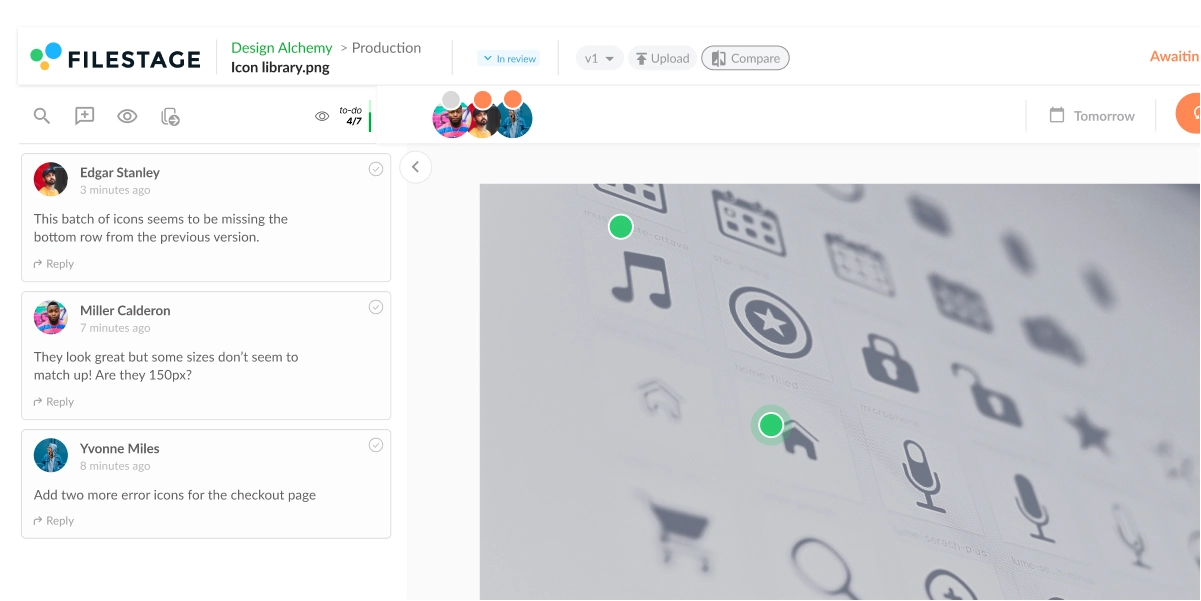
Why is the design approval process important?
The design approval process is important as it helps you to finish projects faster and meet deadlines. Not only that, but your final designs will be the highest possible quality, since an array of stakeholders will have scrutinized your work and provided their feedback.
How do you ask for design approval?
Once you know exactly who you need to get approval from, you can send them an email. Give context about the project, attach the file, let them know what you need from them, and set a deadline.
Alternatively, you can share your request for approval through Filestage. Add them as a reviewer and send them an email via our platform, which will include a link to the design that needs reviewing.
Find out more about how to ask for approval.
Who’s involved in the design approval process?
This varies between businesses and projects, but the following stakeholders might be involved in the approval processes:
- Designer
- Project manager
- Team lead
- Creative director
- Marketing team
- Brand manager
- Legal team
- Higher management
- Client (and all of the above client side)
Make sure you’re clear on exactly who needs to be involved before you start collecting feedback.
Final thoughts
An effective design approval process can help you to collect feedback, get sign-off and meet deadlines with no stress. If you’d like to see for yourself how Filestage could help as part of your design approval process, you can request a free trial here →





